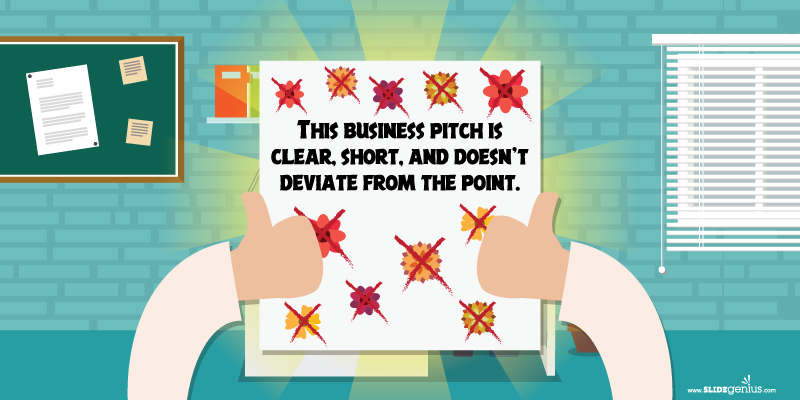
Not everyone has what it takes to be an entrepreneur. There’s a wide set of skills and traits you have to possess in order to become an effective business leader. Among those traits is self-confidence, a natural magnet that can draw people to you and make them want to listen to what you have to say. As such, it’s an invaluable skill during a business pitch.
High Quality, Fast, PowerPoint Design
Get a FREE Design Quote Today!
To entice potential investors, you need to appear and sound confident while pitching your idea. Investors are naturally drawn to leaders with high self-esteem because it signifies strength of character, another trait necessary to lead a business venture forward. As Larina Kase, a psychologist and author, said, “True confidence is not thinking that you’ll get a great result. It’s knowing that you can handle any result.” When the path towards success is dark and murky, confidence can carry a strong business leader through.

How to Boost Your Confidence for a Business Pitch
There are things you can do to pump up your spirits before facing investors and presenting them your business model. Here are seven of them:
1. Look and sound the part
The thing about confidence is that you don’t need to have it to look the part. You can carry yourself with poise even if you’re feeling intimidated or scared inside. There are a few things you can do to package yourself for success: dressing well, correcting your posture, minding the pacing of your speech, using precise language, and smiling. In other words, by making a conscious effort to look confident, you can make a good impression.
2. Exude conviction from every pore
To sell a business idea, you should be able to show investors how passionate and committed you are. They’ll try to gauge whether you really know what you’re doing, so make sure that you remain composed but enthusiastic throughout your business pitch. Make the investors believe in your potential to succeed. To achieve this effect, you have to communicate a certain aura that tells investors how confident you are about your product. This means avoiding uptalk and articulating a statement with a declarative—not an inquisitive—tone.

3. Know your key differentiator
To identify your business’s primary selling point, ask yourself what your edge is as opposed to competitors. Why should investors choose you over businesses similar to yours? You must have something unique to offer to make your business pitch stand out. Apart from this, you should also be able to explain what your worth is to investors. How can they benefit from your business? What gains can they expect, and when?
4. Find an external manifestation of success
Perhaps the best way to gain self-confidence is to find an external manifestation of your business’s capability to survive and succeed. It’s easier to sell a business idea if you have something tangible to back it up. An example of an external validation of success is a solid customer base that raves about your product. A sizable social media following that has positive things to say about your company is also a good proof that you’re breaking ground. Determining your niche is crucial during the first stages of business development because if you sell to the wrong customers, your business is bound to flop. On the other hand, with the right audience, you can improve your revenue and boost your credibility, which will ultimately attract investors towards your business.
5. Solve problems before they appear
Amateur entrepreneurs who only want to impress investors often make the mistake of acting like they’re immune to disasters. They’re hiding behind the assumption that their business model is so perfect, it can’t possibly be taken down by any future problem. As a general rule, before you present your business pitch to an investor, you should think through the possible challenges that you may encounter along the way. If possible, look for various solutions for each issue so that if one fails, you’ll have a backup to fall on. Set up contingency plans for when things don’t go as planned. By making sure that you’re prepared for the ugly as well as the good, you’ll be able to present yourself as a competent leader who can weather the storm when the worse comes to the worst.

6. Rehearse and refine your business pitch
Preparation is key to any speech. As with any other field, achieving a certain level of self-confidence takes time and an immense amount of effort. Research also plays a major role on how competent and confident you will appear in front of a panel. Make sure that your presentation has no loopholes and that everything goes as planned.
7. Worry less and just do your part
Fussing over the aspects of your business pitch that you can’t control will only stress you out. Instead of worrying over the negative aspects of your situation, just focus on the positive. Don’t zero in on your weaknesses as that will only distract and discourage you. Instead, strive to turn your weak spots around and let go of the things you can’t change. Optimism can go a long way in boosting your self-confidence, so try to appreciate the good parts as much as you can.
Above all else, smile even if you don’t feel like it. As Christine Clapp, a public speaking expert at George Washington University, said, “Smiling not only makes your voice more pleasant to listen to; it also conveys confidence…. You will appear friendly, approachable, and composed.” That reason alone should be enough for you to flash a smile during a business pitch.
If you follow the aforementioned tips, you’ll be closer to improving your self-esteem. Just be patient and remember that confidence is built over time. With determination, you can stand in front of a panel of investors and present your business in the best light possible.
Looking for FREE PowerPoint Templates? Enjoy Thousand’s of FREE PowerPoint Slides from SlideStore.com Sign Up Today!
Resources:
Connick, Wendy. “How to Find Your Unique Selling Proposition (USP).” The Balance. June 19, 2017. www.thebalance.com/how-to-find-your-unique-selling-proposition-usp-2917402
Landrum, Sarah. “10 Secrets to Sounding Confident.” Fast Company. July 20, 2015. www.fastcompany.com/3048748/10-secrets-to-sounding-confident
Lobb, Jennifer. “How to Pitch Your Business Like the Pros on Shark Tank.” Nav. December 28, 2016. www.nav.com/blog/how-to-pitch-your-business-like-the-shark-tank-pros-15102
Whitmore, Jacqueline. “9 Ways to Show More Confidence in Business.” Entrepreneur. September 30, 2014. www.entrepreneur.com/article/237634
“How to Give Investors Confidence in Your Business Idea.” Virgin Startup. n.d. www.virginstartup.org/how-to/how-give-investors-confidence-your-business-idea








